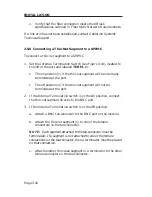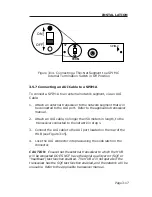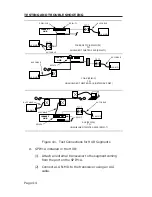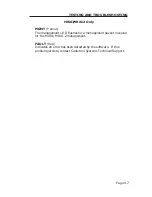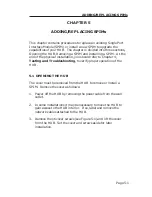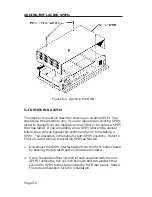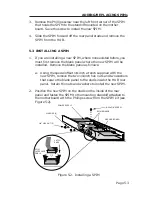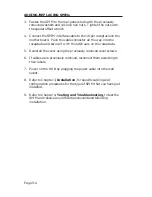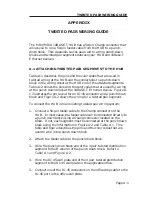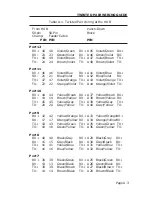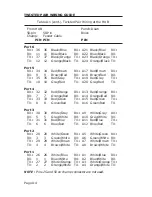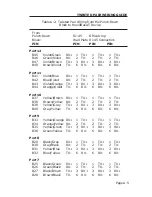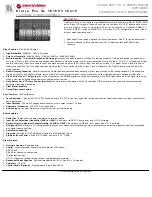
Page 4-6
TESTING AND TROUBLESHOOTING
MRX/MRX-2 and MRXI/MRXI-2
POWER (Green)
When this LED is lit it indicates that the HUB is receiving power.
When this LED is not lit it indicates a loss of input power. Check
the input power source (circuit breaker, fuse, etc.). If the proper
source power is present, the problem could be with the HUB.
NOTE: There are twelve RECEIVE and LINK LEDs, one for each
of the Network Ports.
RECEIVE (Yellow)
This LED flashes to indicate that the HUB is repeating data
packet received from the associated Network Port (1-12) segment.
The flash of the LED is pulse stretched for viewing effect.
COLLISION (Red)
This red LED flashes to indicate that a collision is occurring at a
system level. The flash of the LED is pulse stretched for viewing
effect.
LINK (green)
When this LED is lit for Ports 1-12, the twisted pair ports, this
indicates that a link has been established between the associated
twisted pair segment and the 10BASE-T device at the other end
of the segment. This LED will remain lit as long as a link is
maintained.
If no data has been sent for 16 msec, a positive link test pulse of
100 nsec is sent onto the transmit link of the twisted pair cable.
The link pulses are received by the HUB and checked to
determine if the pulse is occurring at the correct rate, polarity
and pulse shape. If no pulses are received or the pulses are not
correct, the transceiver will enter the Link Fail State and the
LED will not be lit. The HUB will not receive or transmit data
until the link is restored by receiving a correct link test pulse or a
valid packet.
When the HUB is powered-on, the LINK LED flashes if the HUB
detects reversed polarity on the segment attached to the
associated port.
Summary of Contents for MRX
Page 11: ...INTRODUCTION Page 1 6...







